Whether out in the field or at feeders, it can be quite difficult to tell the difference between the female purple finch Haemorhous purpureus and female rose-breasted grosbeak Pheucticus ludovicianus. The purple finch is often mistaken for the rose-breasted grosbeak. Perhaps this is due to their sharing similar coloring as they do not share the same bright colors as the males. Hopefully, with further research into their field markings and behavior, we will be able to distinguish between the two species.
As previously mentioned, the male purple finch and the male rose-breasted grosbeak are quite easy to tell apart due to their bright coloring. The females are far less colorful, so we will have to explore other differences.
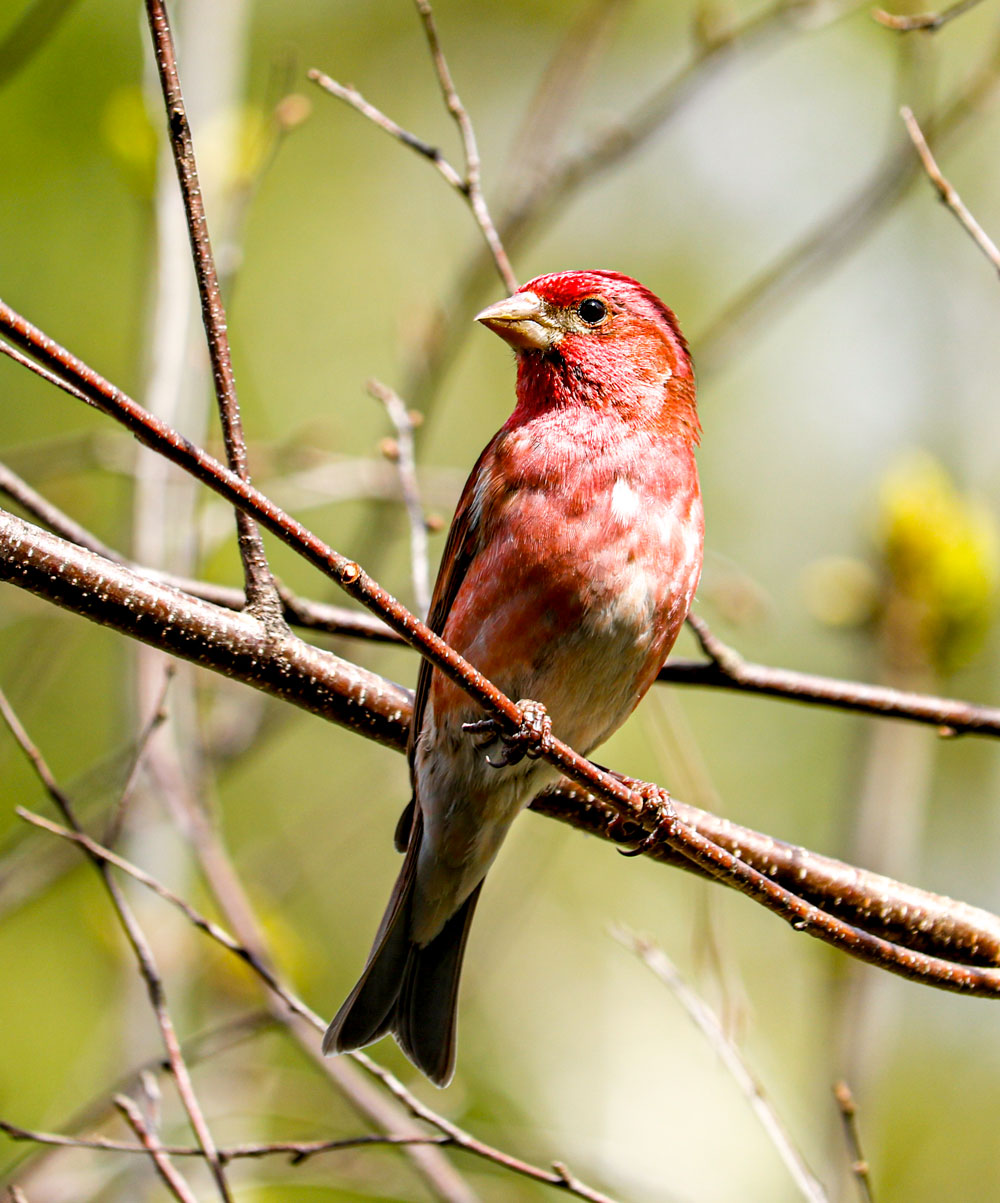
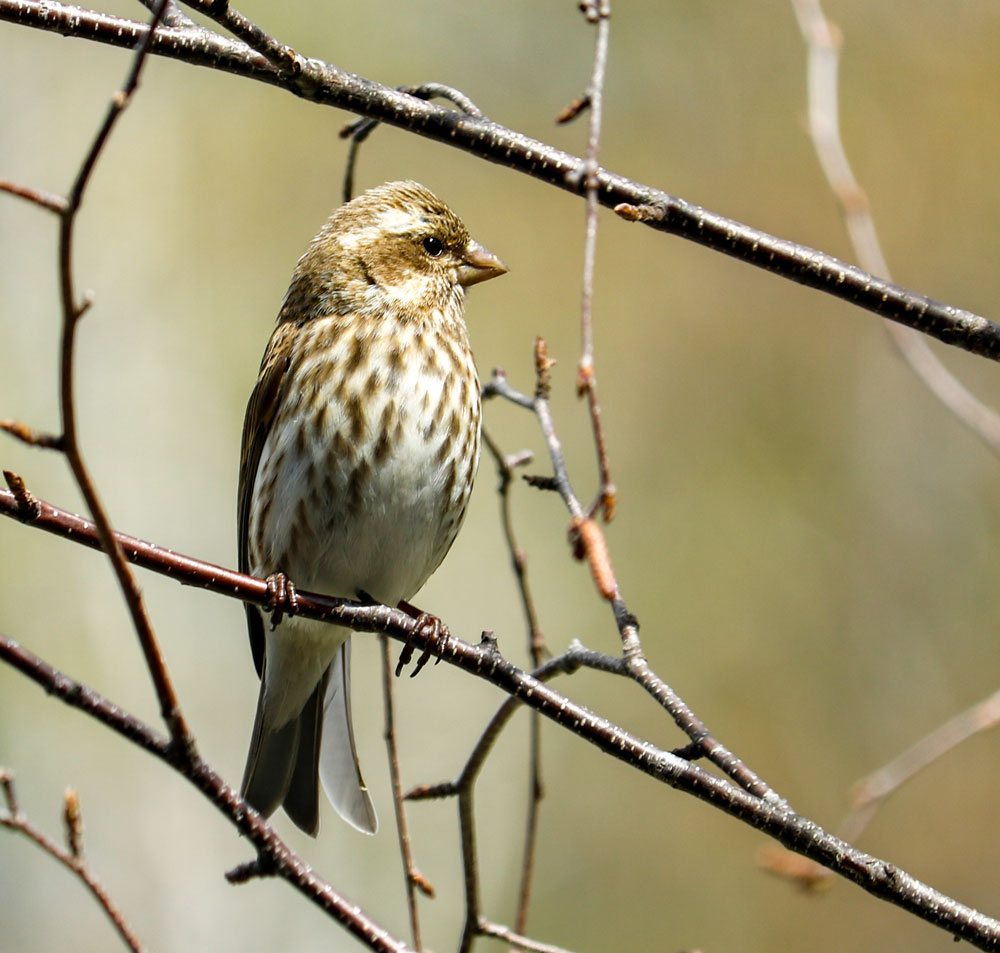
Female purple finch
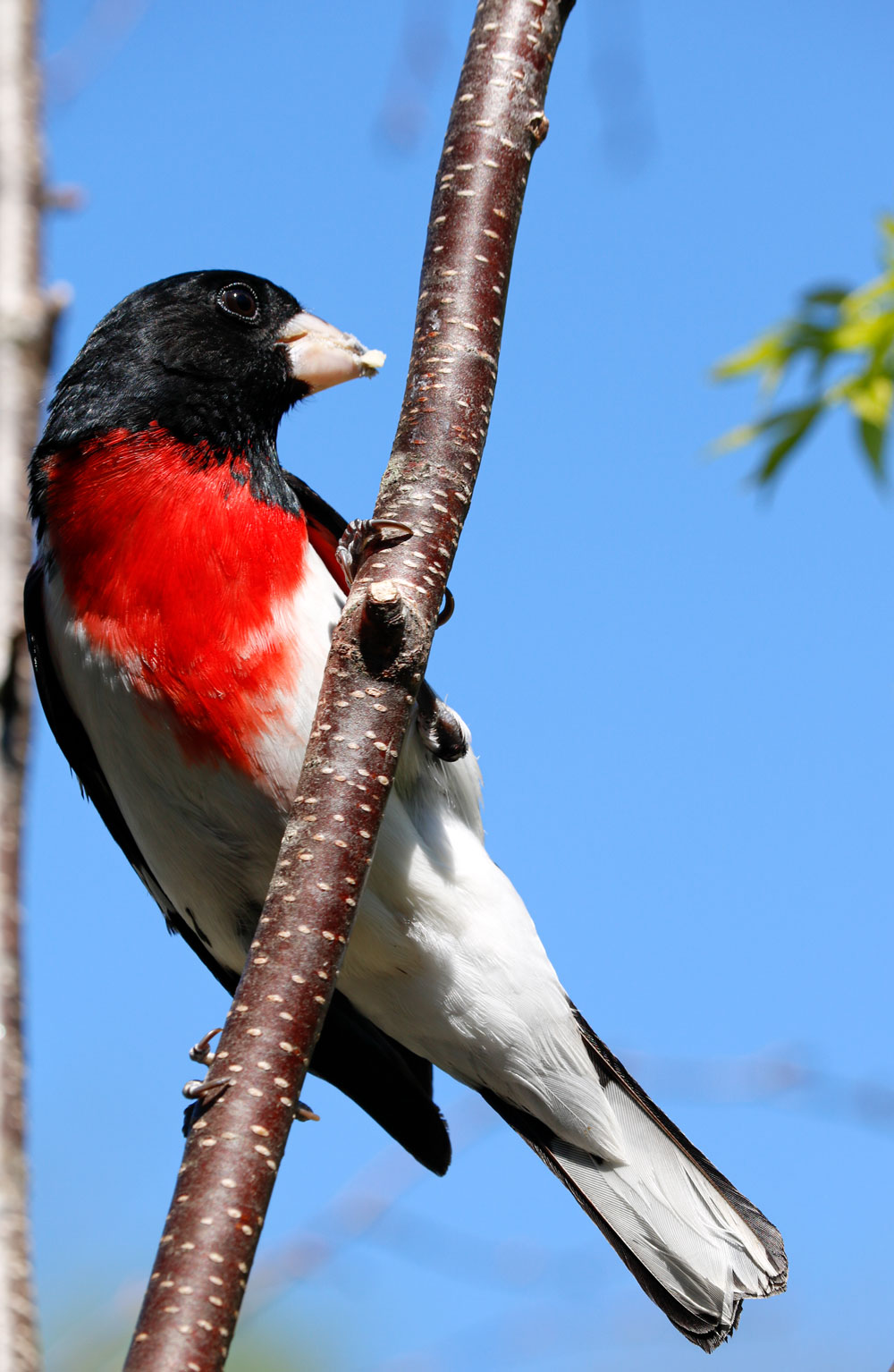
Male rose-breasted grosbeak
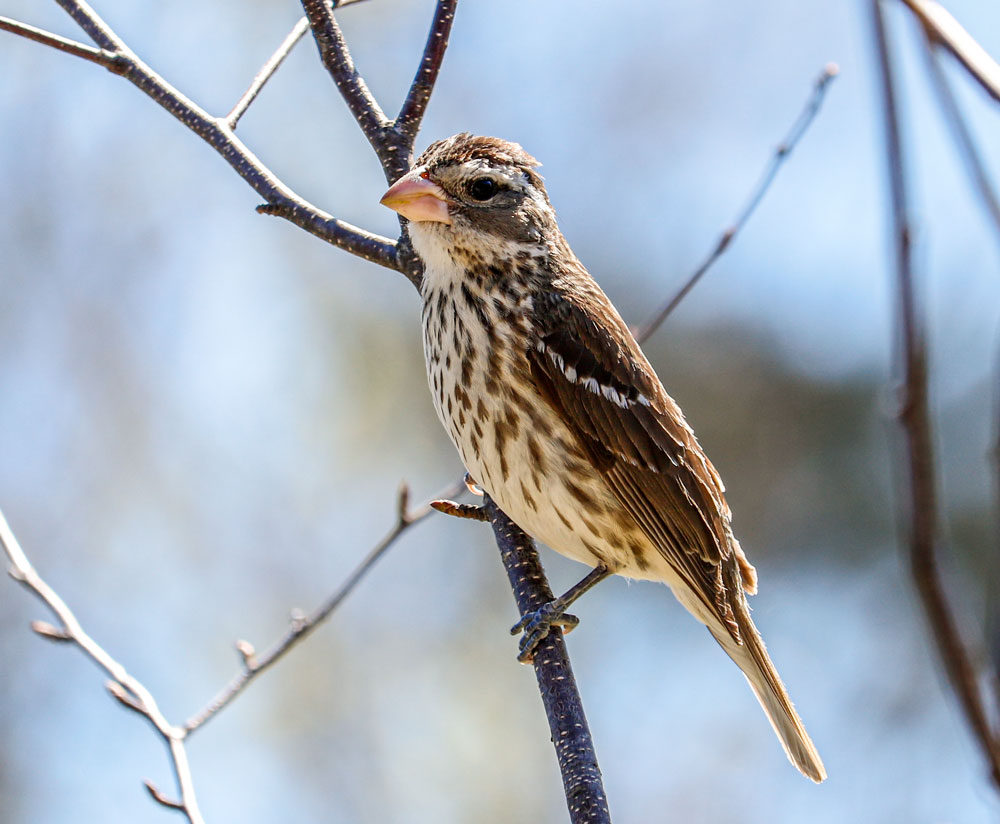
Female rose-breasted grosbeak
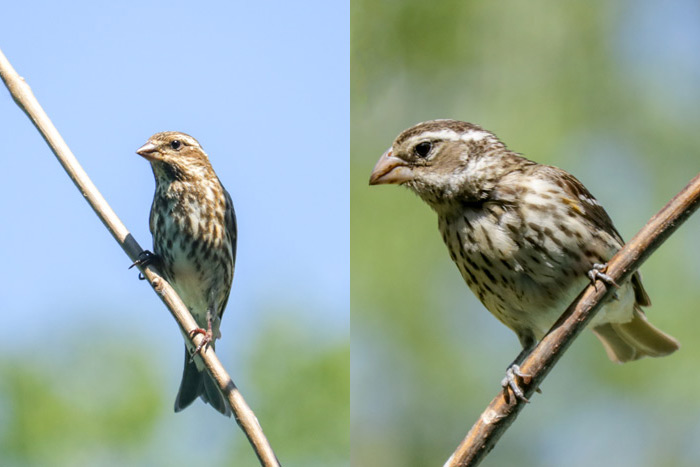
A female purple finch on the left and a female rose-breasted grosbeak on the right.
Size & Shape
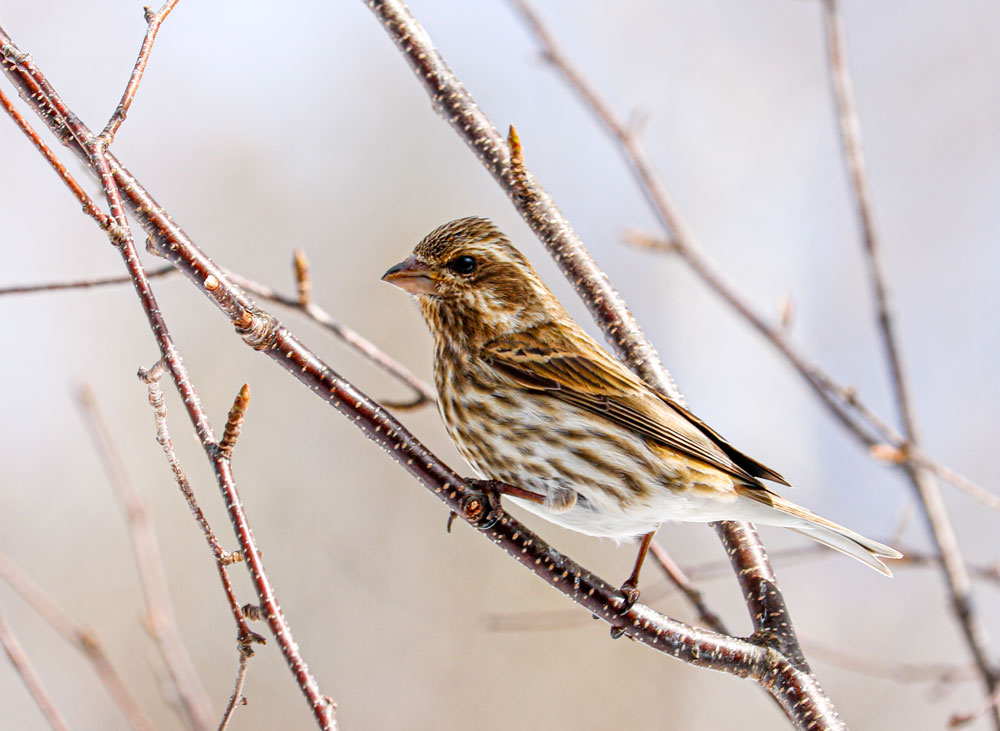
The female purple finch is a stocky bird (4.5-6.5 in, 12-16 cm). They have large heads, short tails that are notched at the tip, and a medium-length wing. The gray bill is stout and powerful and is larger compared to the bills of other sparrows.
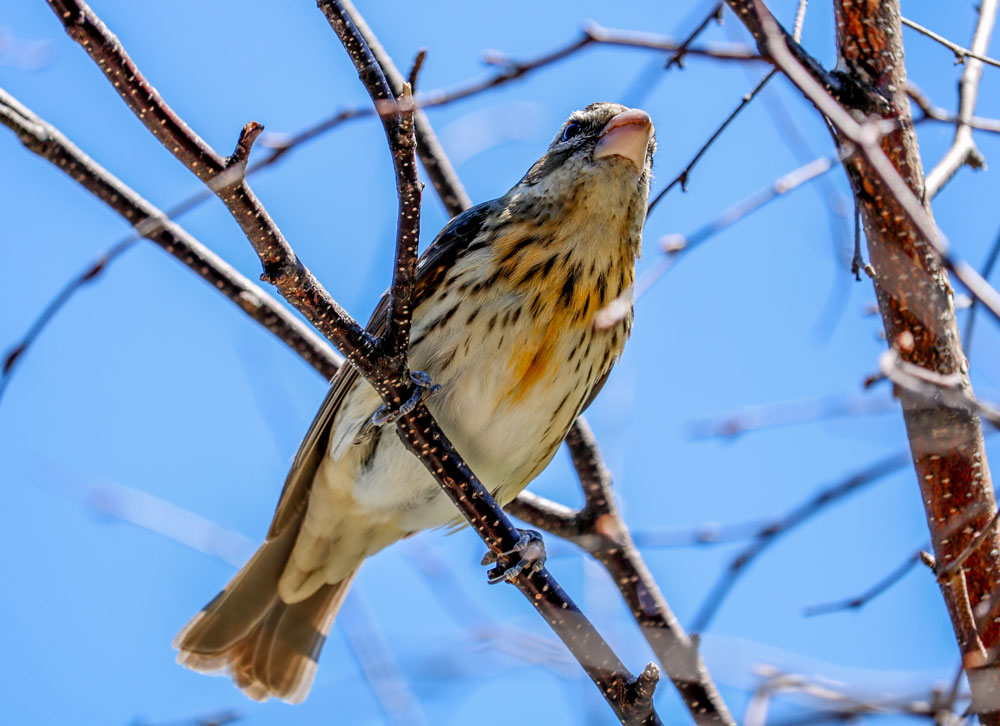
The female rose-breasted grosbeak is a medium-sized songbird (7-8 in, 18-21 cm). These birds are stocky with a large head and very large pinkish-colored triangular bills. They are broad-chested, with a short neck and the tail is squared and medium in length.
Color Patterns
The female purple finch is coarsely streaked on the chest, sides, flanks, and lower belly. These finches also have strong facial markings including a whitish eyestripe and a dark line down the side of the throat. They also have nondescript wingbars-like markings.
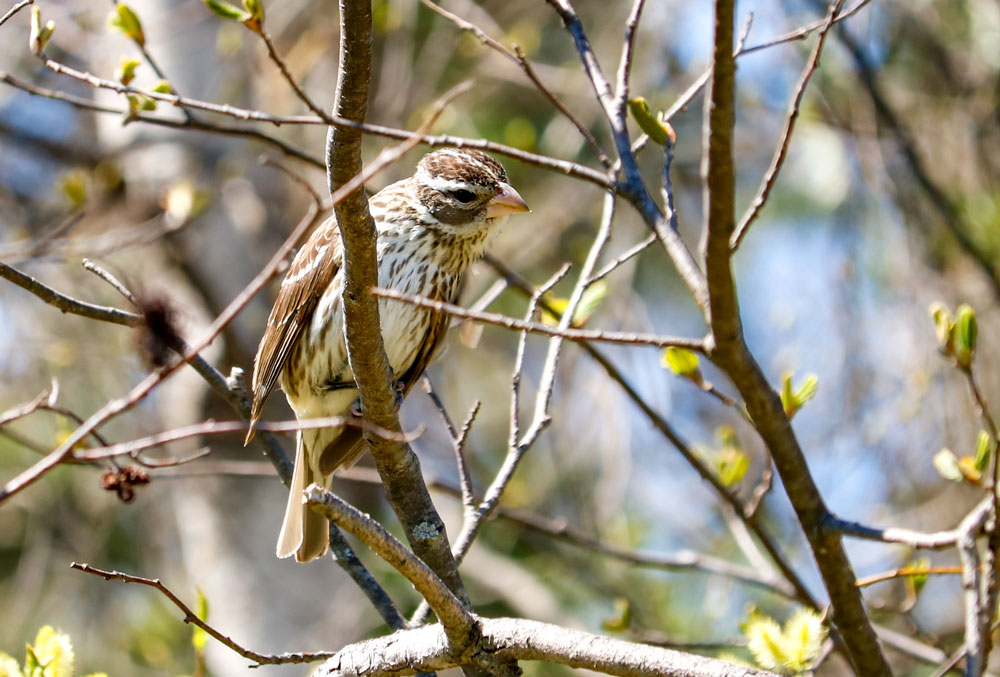
The female rose-breasted grosbeak and immature grosbeaks are heavily streaked on the chest, sides, and flanks that fade to a mostly white lower belly. They have a bold whitish stripe over the eye. Females will flash a yellowish-color under the wings and show white patches in the wings and tail. They also have two white wingbars.
Voice and Sound
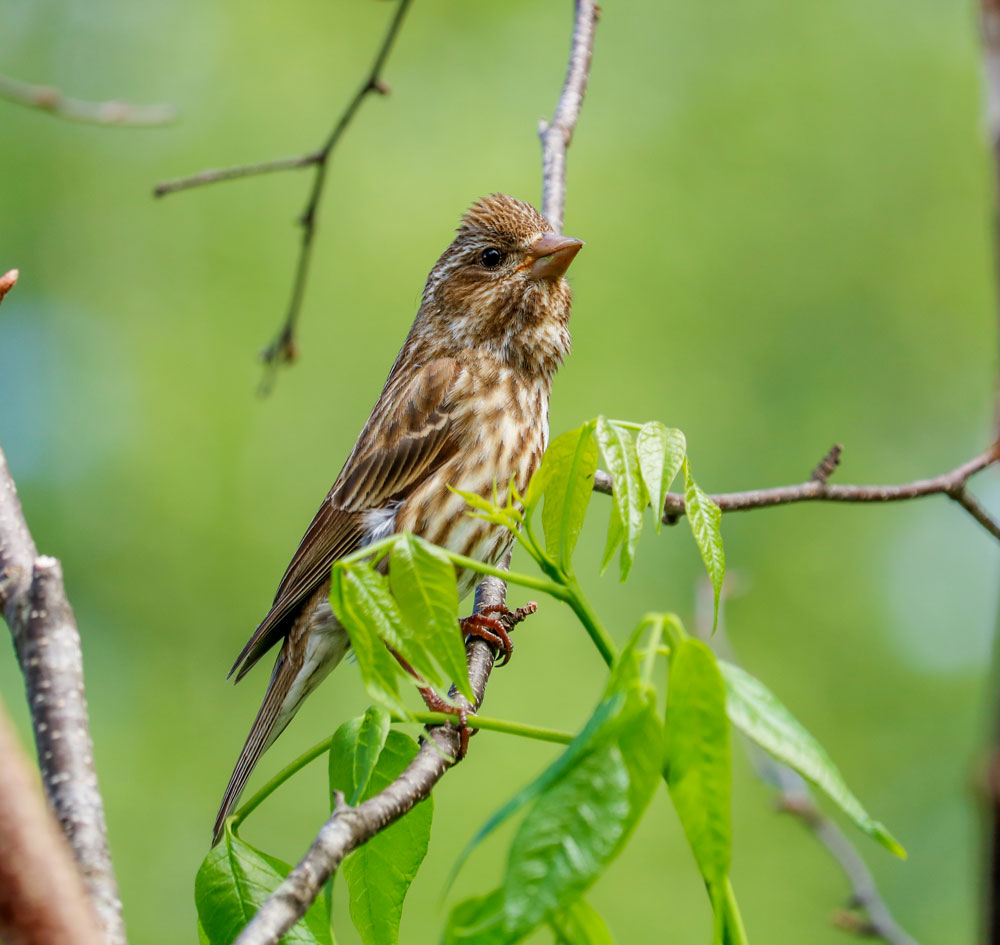
The call of the purple finch is a short, whistled phrase similar to a vireo song tweeyoo.
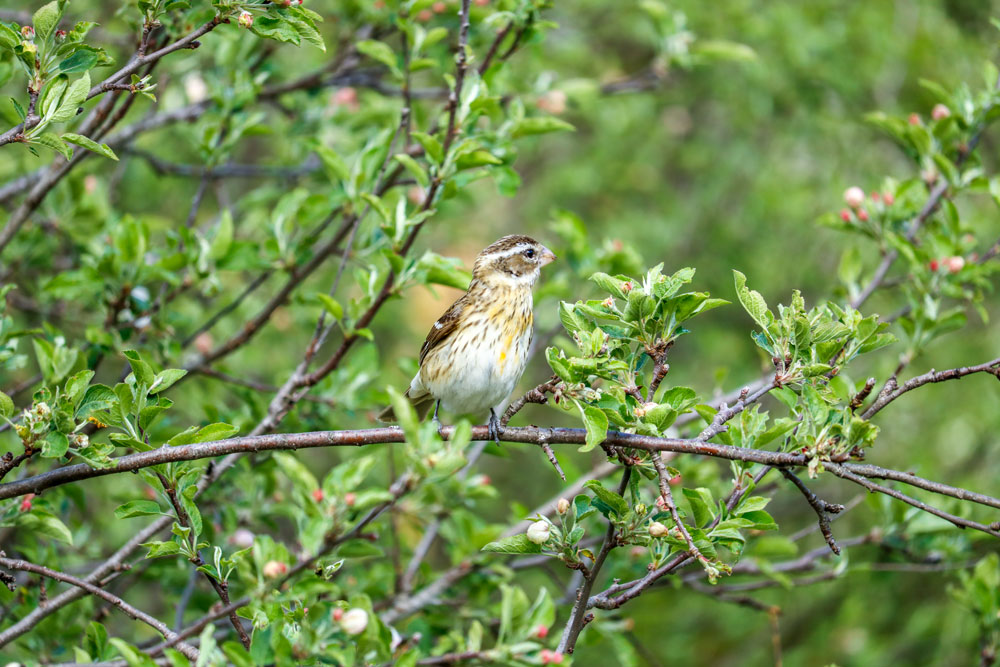
The female rose-breasted grosbeak gives a short, sharp, penetrating squeaky iik sound, sometimes compared to the sound of a sneaker on a gym floor. They also give a harsh and repeated squawk when alarmed. While in flight, the call is a soft and wheezy wheek sound.
Habitat
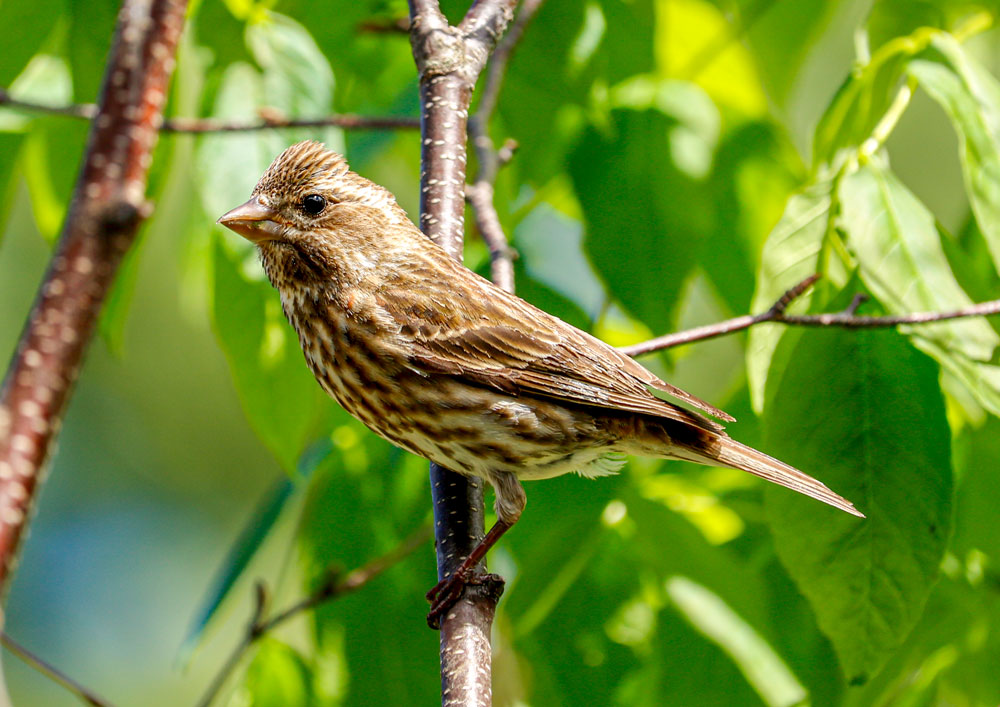
Purple finches can be found in woods, groves, and suburbs. They breed mainly in coniferous forests or mixed deciduous and coniferous woods. During the winter you can find them in a wider variety of habitats, including shrublands, old fields, forest edges, and backyards. During migration and the winter, these birds can be found in a wide variety of wooded and semi-open areas, such as forests, suburbs, swamps, and overgrown fields.
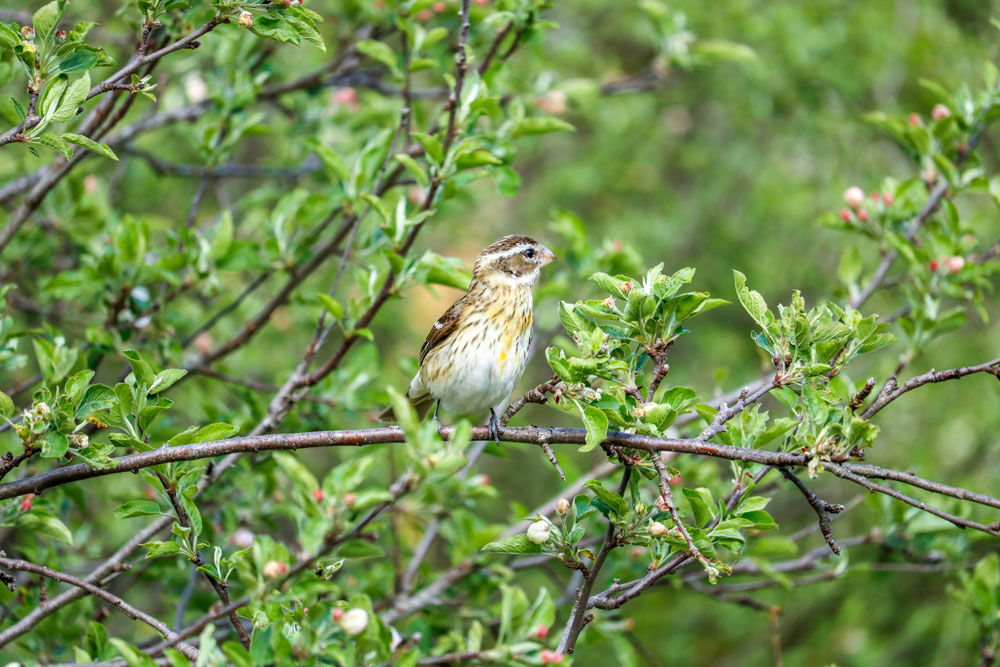
Rose-breasted grosbeaks breed in eastern forests. They can be found in both deciduous and conifers trees. They are common in regenerating woodlands and often found along forest edges and in parks. During migration, they will frequent fruit trees to help fuel their flights to Central and South America.
Feeding Behavior
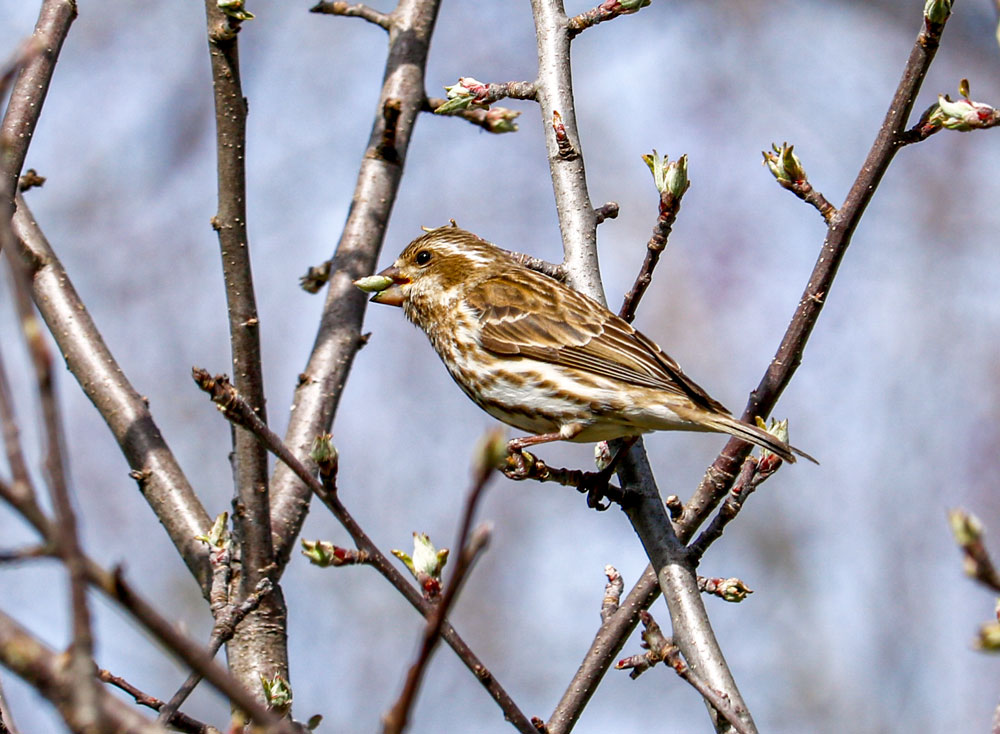
Purple finches forage for seeds and insects up in trees and shrubs, also in low weeds, and sometimes on the ground. When not nesting, they may forage in small flocks. The diet of the purple finch includes seeds, buds, berries, and insects. During the winter, their main source of food is seeds and includes the seeds of trees such as ash Oleeae and elm Ulmaceae, as well as weed and grass seeds. They also eat buds of many different species of trees and many berries and small fruits. Their diet also consists of some insects such as caterpillars and beetles, mainly during the summer months. Young finches feed mostly on seeds.
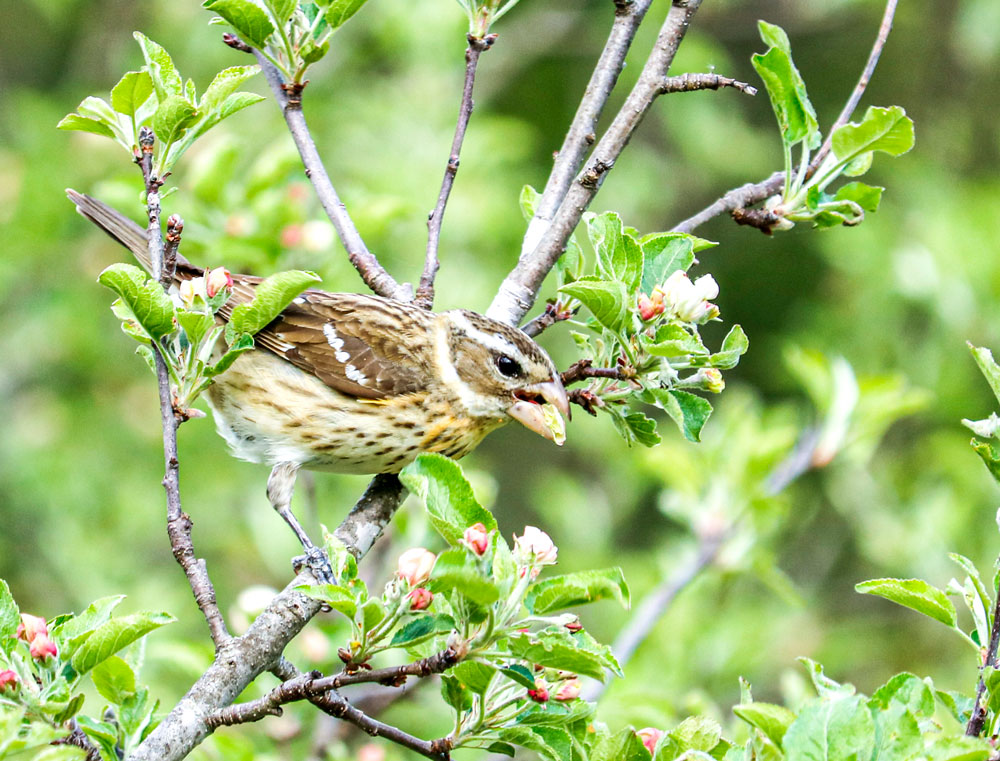
The rose-breasted grosbeak forages for food in shrubs and trees. They will hover and take insects from foliage or bark or catch insects in mid-air. Their diet consists of mostly insects, seeds, and berries. About half of their annual diet may be insects, including beetles, caterpillars, grasshoppers, true bugs, and others, also spiders and snails. They eat many seeds, including those of trees such as elms Ulmaceae, and will sometimes eat buds and flowers. They may feed heavily on berries and small fruits during the late summer and fall.
Both finches and grosbeaks will visit feeders, but only the purple finch will be a year-round visitor here in Maine. In regard to attracting these two species, I have found that both species really enjoy black sunflower seeds at my feeders.
Migration
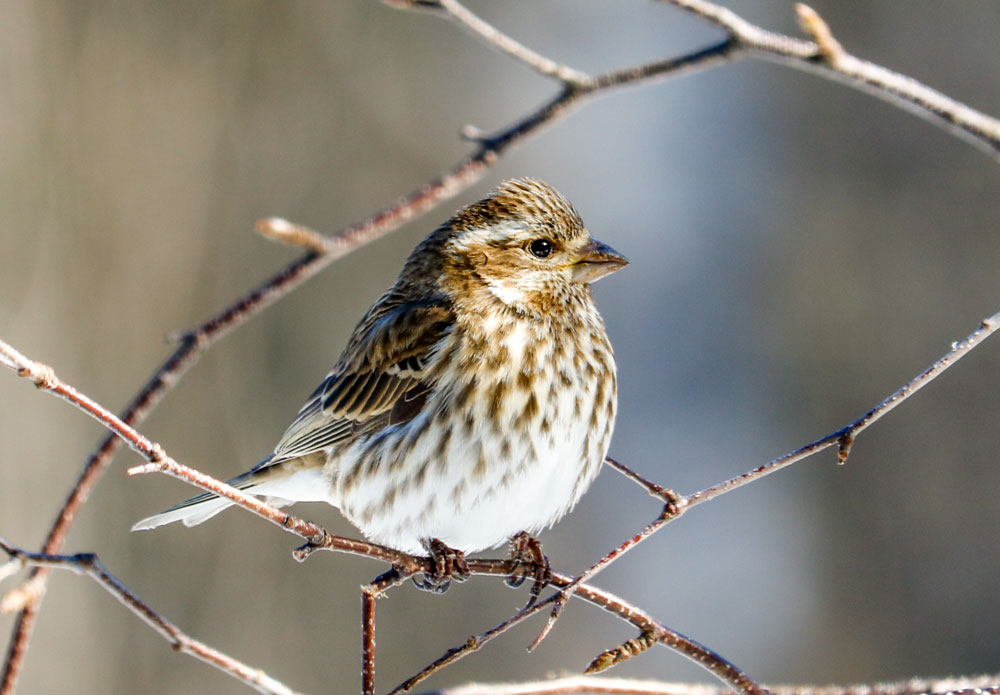
The purple finch is a short-distance migrant. Purple finches are unpredictable migrants that follow conifer cone crops. They will leave Canadian breeding grounds to winter widely across the Central and Southeastern United States, returning to specific regions roughly every other year. Birds that breed in the Northeastern United States and along the Pacific Coast may not migrate.
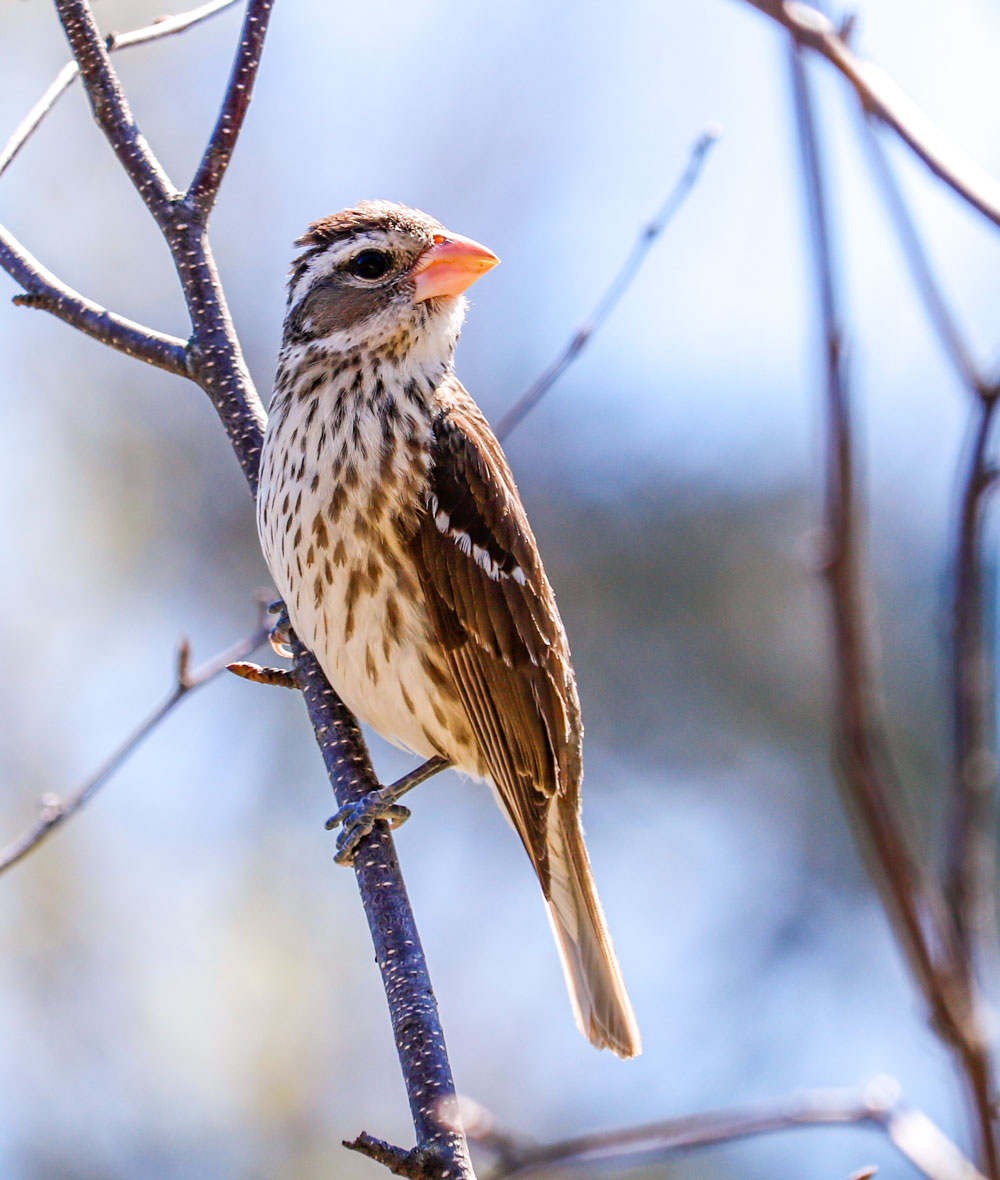
The rose-breasted grosbeak is a long-distance migrant. Rose-breasted grosbeaks fly from North American breeding grounds to Central and northern South America. Most of them will fly across the Gulf of Mexico in a single night. Some birds migrate overland around the Gulf. Rose-breasted grosbeaks that winter in Panama and northern South America tend to be from eastern parts of the breeding range, while those wintering in Mexico and Central America tend to be from western parts.
I hope these keys to identification will help you to distinguish the differences between these two species. I also hope you have an easier time identifying them the next time that you are observing them out in the field or enjoying them at your feeders.
Resources used for this post:
allaboutbirds.org, audubon.org, & The Sibley Guide to Birds
Leave a Reply